#les arènes de lutèce
Explore tagged Tumblr posts
Text
Buying a sandwich and crossing the street to eat it sitting on one of the terraces of a 1st century AD amphiteatre in the middle of Paris before you have to go on with your day is the same kind of beautiful and surreal experience
I really like how many of the world’s most iconic structures and places are just right next to some of the most mundane stuff imaginable, for example

Stonehenge
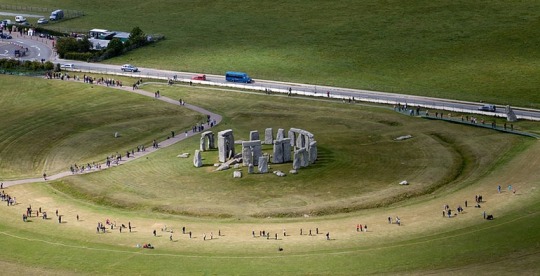
Is right next to a busy road

The Pyramids of Giza
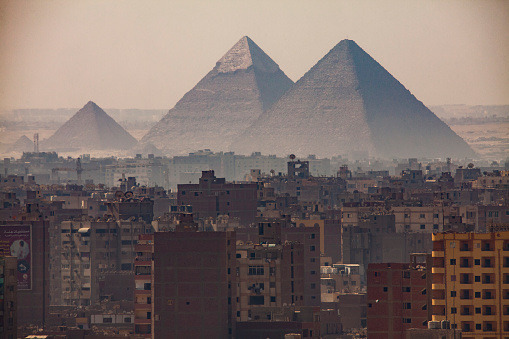
Are at the outskirts of Cairo

Niagara Falls

Are part of the town of the same name
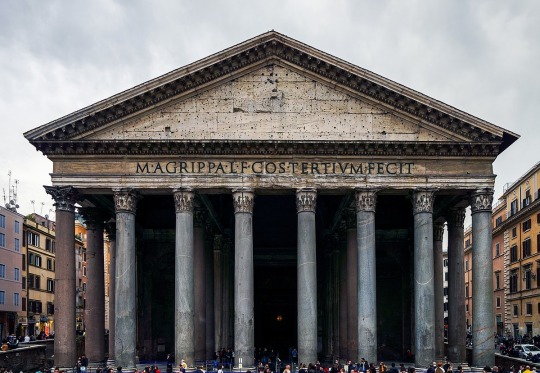
And Agrippa’s Pantheon
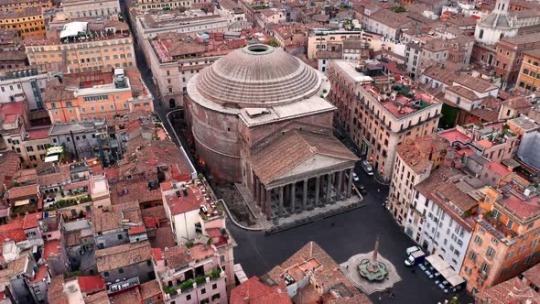
Is crammed inside downtown Rome
It just so interesting to notice.
77K notes
·
View notes
Note
Bon ben puisqu'apparemment j'étais dans le quartier latin sans le savoir, c'est comment les arènes de Lutèce? J'ai vu ça une fois sur une carte mais j'y ai jamais mis les pieds
C'est très joli !! Très calme et bon plan pour manger à midi pour les étudiants à Jussieu parce que le CROUS est vraiment nul. Très fleuri au printemps, il y a régulièrement des artistes qui font des happening un peu chelou, des enfants qui jouent dans le petit parc à côté et des boulistes. C'est aussi un très bon plan à la fête de la musique, tous les ans y a quelques unes des meilleures représentations qui y sont organisées. Un bon coin pour les pique niques aussi comme c'est plutôt grand, calme et ombragé. En plus y a une station de métro juste en dessous (sur la 7).
2 notes
·
View notes
Text

.
Thursday Throw Back… way way back - Les Arènes de Lutèce (Arenas of Lutetia, Lutetia being the old name of Paris).
Built between the 1st and the end of the 2nd century, the arenas could hold about 15,000 people (for context Paris only had 20,000 inhabitants at the time). The original dimensions of the arena were 132 meters long and 100 meters wide. The visitor can still see the location of the actors' box, the platform of the stage and lapidary elements. The Arenas of Lutetia and the Baths of Cluny (Museum of Cluny) are the only testimonies of the Gallo-Roman period still visible in Paris. They are classified as Historic Monuments.
Buried by time under piles of earth, the Arenas of Lutetia were until the 19th century an uncertain image, of which nothing seemed to remain. Only writings dating from 1180 noted its existence, around 1310, and the vineyard of the "Clos des Arènes", also indicated its presence, around 1285. It is while drilling the Monge street (between 1860 and 1869), that this incredible discovery was made, in 1870.
2 notes
·
View notes
Text
Estelle Faye : Un éclat de givre
Dans un Paris violent et feutré, aussi dangereux que complexe, une certaine idée des arènes de Lutèce s’est réfugiée. La crise des ressources qui a ravagé le monde au XXIe s. a fini par engendrer une ville qui concentre son histoire. Paris, dans l’avenir, est devenu son propre condensé. Au centre, l’île de la cité est dirigée par le roi des Gitans, et l’enfer(-Rochereau) est un repaire grotesque…
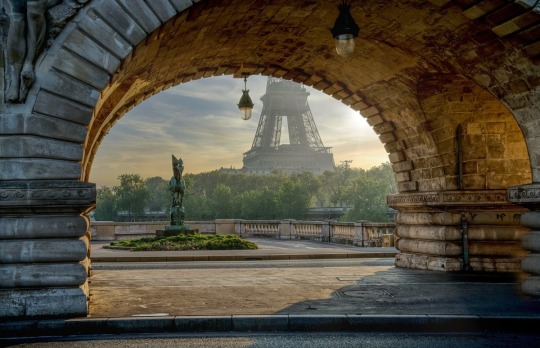
View On WordPress
#Apocalypse#City#Collapsofictions#Collapsologie#Ecologie#Ecology#Fiction#Mutants#Paris#Roman#Science-fiction#sfff#Ville
0 notes
Text
Dédicace aux Arènes de Lutèce
Aux Arènes de Lutèce, le 1er juillet à partir de 15h Tarek sera présent pour dédicacer ses dernières parutions (État des lieux #2, Entretiens à l’Atelier et La guerre des Gaules, la véritable histoire) avec Vincent Pompetti et Cédric Naimi. Square des Arènes de Lutèce, 4 rue des Arènes 75005 Paris

View On WordPress
1 note
·
View note
Text
Dédicace aux Arènes de Lutèce
Aux Arènes de Lutèce, le 1er juillet à partir de 15h Tarek sera présent pour dédicacer ses dernières parutions (État des lieux #2, Entretiens à l’Atelier et La guerre des Gaules, la véritable histoire) avec Vincent Pompetti et Cédric Naimi. Square des Arènes de Lutèce 4 rue des Arènes 75005 Paris Partenaires : ACTISCE Graffart Nouveau monde éditions Tartamudo Editions Mairie du 5e…

View On WordPress
0 notes
Text
paris 13th december
We began our day today with an unhurried stroll down from Les Gobelins to the Seine, passing by a few noteworthy sights including the lesser-known Arènes de Lutèce not far from our hotel. These ancient Roman remains of an arena where gladiatorial combats occurred in the first century now make up a kind of public park, a place where boys might play soccer in a less bleak season. Further down the road we saw Notre Dame, by daylight for the first time, in similar states of ruin with a girdle of scaffolding all around. After admiring these ecclesiastic bones from across the water for a while, we went down the bank to Saint-Michel for the metro.

I didn’t remember visiting Sacré-Cœur the last time I was in Paris, aged seven, though there was something familiar in the grey, leaf-strewn steps that extended upwards at an increasingly painful incline. When we reached the top of the escalade it became clear we weren’t the only ones risking agonised limbs for the view of the city—this was the first proper tourist scene we had come across, complete with a hundred shuttering smartphone cameras and the calls of street-sellers promoting their cheap souvenirs. The great ivory cathedral was beautiful to observe from the outside but didn’t tempt us to queue for a glimpse of the interior, so we left this lookout over Paris’ smoggy skyline and its occupying mob behind.

We descended just in time to secure an early lunchtime table at The Hardware Société, situated along one of the streets just below the Sacré-Cœur. This unlikely iteration of the Melbourne cafe culture classic abroad was mostly chosen so Mum could have a chance at a real coffee, which the French don’t do. It was odd to walk into a cafe in Paris and be addressed in English by the middle-aged Australian man managing the pass, as though we had teleported to the tram tracks and sunnier streets of Brunswick, or North Fitzroy. The only hint of the Parisian was in the fried brioche, souffle and tuna millefeuille which balanced out the Melbournian brunch menu. I had their baked tofu, a vegan dish of soft tofu pieces in a ramekin of sweet pumpkin puree and cashew cream. It was something like a soup in effect, deeply comforting on a cold day.

I cast aside the reassurance of this anglophone, known environment by taking the opportunity while waiting for Mum outside the cafe to call up a restaurant about dinner—a Morrocan place, Le Sirocco, across the road from our hotel. The man on the phone got a little fed up with my half-articulated French at some point, but I was glad I at least tried. So far, Parisian waiters have failed in every way to live up to their reputation of haughtiness; perhaps we’ve just been going to the right places, or perhaps we aren’t loud and American enough to attract much ire. Each interaction has been so generally pleasant, almost too much so. It feels conspiratorial.
Next we visited the Cemetery of Montmartre, discovered at the end of a winding street of expensive shops and expensive homes that wore a coat of fallen plane tree leaves. Though we failed to find any of the cemetery’s notable graves, the general aura, perfected by the cawing of the atmospheric crows we could only assume to be paid actors. Many of the graves, forgotten or heirless, were crumbling where they stood. One particular headstone deposited on the main avenue between the grand funeral chapels and family vaults was folded completely in two, its lettering eroded and iron fence overgrown with moss. There was almost nobody about except for us and the birds and the groundskeeper watching at the cemetery gate.

From there we made our way through the tawdry tourist area past the Moulin Rouge down to the quieter Rue des Martyrs, where we came to rest on a wooden bench in the square. A small merry-go-round called Le Lutin lay dormant in the cobblestone-floored forest of lampposts and Christmas trees—here we ate freshly baked rugelach from a nearby Levantine bakery. These small crescents of pastry were sweetened by a cinnamon-chocolate filling and barely survived long enough to attract the attention of local pigeons before they were gone.

Our sightseeing continued in the Galeries Lafayette, a grand department store whose central dome enclosed an enormous Christmas tree decoration. Then the Palais Garnier across the road, this time from within, with its extravagant ceilings and overwhelming scale. It was crowded with people battling for the best angles for their selfies, though this state of social chaos did not detract from the opera palace’s magnificence, which announced itself above every staircase and at every turn. There are few places, even the palaces of divine right kings, that have so little restraint. The only ungilded stretches of wall were given over instead to mirrors which reflected back the glowing excess of the rest of the room.


Having made it back to our hotel for a short rest, we had only to cross to the other side of the little alleyway to make our dinner reservation at the Morrocan restaurant. This meal, served to us in a softly-lit dining room from clay tagines burning to the touch, was one of the best so far. We began sharing the vegetarian assiette, a collection of small salads and dips and crisp filled savoury pastry. My main was the lamb tagine with caramelised carrot and plump apricots, sweet and rich flavours complimenting meat which was so tender it fell from the bone. Mum’s vegetarian tagine was equally remarkable; we completed the evening with a crème brûlée crusted in biscuity semolina and honey-butter-soaked baghrir. My cup of fresh mint tea was poured from high above by the practiced hand of the younger waiter. We weren’t offended when the same waiter was forced to prod us out the door to make room for the next sitting of diners, gathered in anticipation at the bar. Better more people get to eat such good food, and sooner, than less.

0 notes
Photo

Picture and description of Anglaigus from the France TV website: “L’ambition de Labienus pour romaniser Lutèce fait notamment appel à la création d’édifices architecturaux modernes, destinés susciter l’admiration jusqu’à Rome. Arènes, cirque, thermes, Arc de Triomphe… tout y passe ! Pour les mener à bien, le général romain s’appuie sur un jeune architecte prometteur : Anglaigus ! Vedette de l’album Le Domaine des dieux, il est ici en fin d’études, convaincu de son talent et pétri d’ambition. Son rêve : attirer l’attention de Jules César pour un jour lui proposer son chef d’œuvre : le Domaine des dieux!”
Attempt of English translation: “the ambition of Labienus to romanize Lutèce calls in particular for the creation of modern architectural buildings, intended to arouse admiration as far as Rome. Arenas, circus, thermal baths, Arc de Triomphe… anything goes! To carry them out, the Roman general relies on a promising young architect: Anglaigus! Star of the album Le Domaine des dieux, he is here at the end of his studies, convinced of his talent and steeped in ambition. His dream: to attract the attention of Julius Caesar to one day offer him his masterpiece: the Domain of the Gods!”
The page linked below contain this same image, but a giant version of it.
France TV https://www.francetvpro.fr/contenu-de-presse/15533811
Idéfix et les Irréductibles © René Goscinny & Albert Uderzo, and Studio 58, 2021.
#Asterix#Anglaigus#Idefix et les Irreductibles#France TV#Squareonthehypotenus#Quadratus#Anguloagudus#the star of the book Le Domaine des dieux is Anglaigus!
22 notes
·
View notes
Photo

Sullivan Les arènes de Lutèce
3 notes
·
View notes
Text
Du monde entier au confinement du monde // Domitille Arents
[English below]
Le temps de renoncer aux projets
De lointain
D’aventures
D’Amérique
Et d’ouvrir ce livre qu’un ami - que je ne vois plus - m’avait offert.
Un livre qui ne parle pas du présent dans lequel je voudrais me complaire mais Du monde entier au cœur du monde[*].
Je passe les poèmes
Impatiente
Je dois abandonner l’Amérique.
Celle que je fantasme depuis le vieux continent. Je n’irai pas dans quelques mois, j’ai fini par me faire à l’idée.
Il me parle, des paysages de l’Amérique du Nord, de ses constructions audacieuses, de New-York, de la Californie, de la Floride, du Mississipi, du Far West, de ses gens.
Des Américains à Paris.
Ces gens n’entrent pas dans ma mythologie de l’Amérique. Du moins ceux que j’ai rencontré à Paris d’octobre à mars. Ils sont une trentaine, peut-être cinq ou six que je vais revoir. Dans l’Amérique physique, dans ses grands espaces, ses villes, ses campus ?
Nous nous sommes quittés sur un quai de gare, à la bibliothèque, autour d’un dernier verre à Chatelet, aux arènes de Lutèce, ou « au bureau », multipliant les adieux, accusant la situation.
Ils me disaient que le plus important était qu’à présent, nous nous étions rencontrés et appréciés. Nous n’avons plus qu’à nous revoir et continuer.
En attendant que nos lettres traversent l’Atlantique, Du monde entier au Cœur du Monde.
––––––––––––––––––––––––––––––––––––––––––––––––––––––––––
The time to give up all plans
of distance
of adventure
of America
and to open this book that a friend – who I no longer see – gave me.
A book that speaks no more of the present where I’d like to wallow but Du monde entier au coeur du monde[*].
I pass poems
impatient
I have to abandon America.
The one I’ve been dreaming from the old continent. I won’t go in a few months, in the end I’ve adjusted myself.
It speaks of North American landscapes, of its bold buildings, of New York, California, Florida, Mississippi, the Far West, their people.
Americans in Paris.
These people don’t fit my American mythology. Not the ones I met in Paris, October to March. Thirty I met, five or six I’ll see again. In the physical country, its open spaces, its cities, its campuses?
We parted on a train platform, at the library, over a final glass at Châtelet, at the Arènes de Lutèce, or “at the office,” multiplying goodbyes, blaming the situation.
They told me the most important thing was that now, we had met and liked each other. We have only to meet again to pick back up.
Meanwhile our letters cross the Atlantic, Du monde entier au Coeur du Monde.
––––––––––––––––––––––––––––––––––––––––––––––––––––––––––
[*] Blaise Cendrars, Du monde entier au Coeur du monde
Domitille Arents is a Master’s student in film and literature at Sorbonne Université.
Translation by Shira Abramovich.
4 notes
·
View notes
Text
site preview

hi all! we’re back with our second preview. we’ll have another couple coming to you soon as well. below the cut you’ll find some general information about paris as well as arrondissement descriptions that’ll be part of our site encyclopedia. it’ll be presented a little differently on the site, but the information below will remain the same.
GENERAL OVERVIEW
as the capital of france, paris boasts a population and counting of over two million residents. the city of paris is often described as two-fold. there is paris “proper” which designates the historical city and its 20 arrondissesments, and then the paris metropolitan area that includes the suburbs surrounding paris.
paris-proper does not include skyscrapers, the notable exception is the tour montparnasse and it’s the only skyscraper built in the middle of the city. the building height in paris-proper is limited to the height of 19th century buildings, roughly 10 floors, and most apartment buildings, built by haussmann during the napoleonic era, are six stories tall and tend to be either reserved as luxury homes in the 1st and 6th arrondissement, or are divided in miserly studio apartments.
these building restrictions are to preserve the historical cahcet of the city but also has been the reason the city cannot accommodate the growing population. the housing crisis in paris has been going on for over a century and has not improved since. it is the second most expensive city to live in in the world and anyone living on middle-class wages would either be doing so within the city walls by sharing an apartment or living in substandard conditions. it is not uncommon for students, struggling artists, or performers to occupy shared rooms and small apartments through illegal subletting to cut living costs.
outside paris-proper lies the outer metropolitan parisian suburbs. these range from the chic saint-gratien and sanois, where one can enjoy the tranquility of a nice house and space galore, to the lower-socioeconomic areas like argenteuil, saint-denis and cour-neuve. poverty piles up in the french version of subsidized housing units known as les cités, these are tower complexes where families share the life of an impoverished community leading to any and all excesses such pressures can induce. the outer suburbs are linked to paris-proper by train system, the RER.
THE ARRONDISSEMENT SYSTEM
the twenty arrondissements refer to the twenty subdivisions of paris-proper. they are arranged in the form of a clockwise spiral (often likened to a snail shell), starting from the middle of the city, with the first on the right bank (north bank) of the seine. the smaller the number of the arrondissement, the older and more historical the area is.
first - also known as the ‘premier’ arrondissement. the heart of the city carries some parts of the right bank such as les halles, which has been there since the middle ages. in addition, a large part of this arrondissement is occupied by the louvre and tuileries garden. the central arrondissement is one of the smaller and least populated of all paris. however, what the area lacks in full-time population it certainly makes up for in sheer tourist numbers.
second - known as ‘bourse’ the second arrondissement of the city is the financial one and as such, is home to the parisian stock exchange as well as a myriad of banks and financial institutions. bourse is also the smallest of all arrondissements. bourse is also home to the textile district, sentier and has the highest concentration of covered passages that the city has to offer. these 19th-century built commercial lanes are often covered in beautiful art nouveau façades.
third - the old jewish quarter or ‘temple’ as it is also known is a lively and trendy district, with many faces. you will find lots of high-end art galleries close to beaubourg (which is in the fourth arrondissement). while its winding old streets are full of vintage shops and beautiful hôtel particuliers. temple is also home to the first chinese community in the city as well as museums such as the picasso museum, carnavalet museum, and musée des arts et métiers.
fourth - home to the lively part of le marais; an area filled with bars, clubs, and restaurants which remain open into the early hours of the morning. with a plethora of beautiful and historic architecture throughout this arrondissement it also has top tourist attractions like notre dame, and centre georges pompidou. the fourth arrondissement has a growing lgbtqi+ population living in the area with many spaces for the community.
fifth - a district known worldwide for its history and culture, with sights like the panthéon, the roman arenas (les arènes de lutèce) and the cluny museum. it is also known as the latin quarter of the city, the fifth arrondissement of paris is well-known for its vintage cinema screenings and as a hub of student nightlife. this area is home to some of paris’ most prestigious universities (sorbonne), colleges and high schools.
sixth - known for its famous quartier saint-germain-des-prés, a meeting place for students, artists, and intellectuals during the twenties. visitors come here looking for this long since disappeared atmosphere and are ready to pay ridiculous prices in places like cafe de flore or cafe les deux magots. six is home to luxembourg gardens, saint sulpice church, and nice winding streets. it is also a great district for foodies in paris, as well as luxury boutiques and art galleries, with plenty of tourists ready to empty their wallets here.
seventh - home to the upper-class since the seventeenth century when it became the new residence of french highest nobility. this bourgeois district has the eiffel tower, invalides, and lagerfeld; as well as big avenues with beautiful hôtels particuliers transformed into embassies. the only lively part which deserves a mention are the streets around rue de bac, at quartier sèvres-babylone, full of nice haute-couture and prêt-à-porter shops.
eighth - this is the district of fashion and luxury symbolized by the famous “golden triangle” formed by rue montaigne, rue george v and avenue des champs-élysées. the eighth arrondissement is ultra luxe and undeniably elegant. it is one of paris’ main business quartiers, the current executive branch of french government is based here as well as the élysée palace, where the french president resides.
ninth - from the red-light district of pigalle to opéra garnier, this is a trendy and historic area with its old cafes, offices and haussmannian architecture where you can still can find a true neighborhood life and culture. the streets around st. lazare were parisian central for impressionists. today, the early 19th-century architecture and lovely courtyards have been discreetly preserved. but, watch your safety on rue saint denis.
tenth - one of the trendiest districts in paris, linked to canal saint-martin waterway and iron footbridges. this is a district of bobos (bohemian-bourgeois parisians), with agreeable cafes and vintage shops. it is also the district of two major train stations: gare du nord and gare de l’est. it boasts an always busy and popular atmosphere with a lot of bars at rue de faubourg saint-denis.
eleventh - this arrondissement is one of the most densely populated and urban. with neighborhoods like bastille and oberkampf filled with expats, “hipsters” and young parisians. nightlife is booming, but in a street alley kind of way (don’t expect red carpets). you want to fit in with the urban crowd, explore little wine bars and tiny bistrots on avenue ledru rollin and rue de charonne.
twelfth - the park district of paris. home of parc floral, bois de vincennes, and parc de bercy. it is one of the more residential areas and has more affordable housing than a lot of other arrondissements. a very sleepy district, this quartier went through a major transformation in recent years, and now has modern shops and arena in bercy. you’ll also see opéra de la bastille – the second largest opera house in paris is also a much more modern architecture compared to opera garnier.
thirteenth - a kind of no man’s land with a very popular character and a strong chinese population. this district of paris has some cool things to see and do like the arty butte-aux-cailles neighborhood, some quintessential paris bistros or its incredible street art. the mural program in thirteen has invited the most renowned street artists in the world to give some color to this district of paris.
fourteenth - a predominantly residential quartier that carries a sleepy charm. home to many artists around the world and “the breton” (northwesterners of france) community, this area may be residential but also has many vibrant cafes on boulevard du montparnasse and the rue daguerre. it is also home to parc montsouris, one of the most beautiful parks in paris, as well as the catacombs.
fifteenth - another residential area where locals aren’t too keen on its 1970s high-rises, hence they’ve coined the term moche grenelle (ugly grenelle) to describe parts of the area. located on the left bank of the seine, this arrondissement is home to the likes of the pont bir-hakeim, as well as several parks, notably that of andré-citroën. definitely a family district, very quiet, with no special character, and a long way from everything.
sixteenth - locals call it le seizième, due to the affluent population in the french pop culture. it is the parisian version of new york’s upper east side or london’s kensington. here, you’ll see the most prestigious residential areas in paris and the most luxurious hotels, like the peninsula hotel, and hotel raphael. sixteen also welcomes the french open tennis grand slam every spring. don’t be surprised if you run into an expat family in which the parents have been relocated to work in france.
seventeenth - this district is formed by three very different neighborhoods: merchant quartier de ternes, bourgeois quartier monceau, and arty quartier de batignolles. the 17th is known for batignolles district that was originally outside of paris until napoleon iii included it as part of the city in 1860. a group of artists such as édouard manet based in this area to make a name for themselves by painting scenes of cafes. much like the 15th arrondissement, this area is slightly less touristy than many of the others.
eighteenth - this is the most paradoxical of arrondissements in paris. it is home to montmartre, the quintessential neighborhood in paris, but there are also popular zones long forgotten by everybody like little india, africa, and the infamous goutte d’or neighborhood. with strong bohemian roots it was a gathering place for composers, writers and artists to live in a commune and draw inspiration from the area. many have made their mark here, including: salvador dalí, amedeo modigliani,claude monet, piet mondrian, pablo picasso and vincent van gogh.
nineteenth - a former industrial area developed along canal de l’ourcq. today it is a very popular district with a strong mix of immigrants and a very parisian soul at the same time. it is home to two wonderful parks, parc buttes-chaumont, and parc de la villette. a primarily residential district also known for its world renowned music schools, conservatoire de paris and the philharmonie de paris, both part of the cité de la musique.
twentieth - a few years ago, this was the cheapest district in paris, that’s why so many young parisian couples with lower budgets came here to live. today it is one of the trendiest and most authentic districts of paris and all this without tourists! best known for being home to père lachaise cemetery, there are not many other tourist sites here. however, it has cool cafes, bars, some street art and parc de belleville offers some of the best views of the city of light.
5 notes
·
View notes
Text
Cet aprèm, Lorie m'a dit "cet enfant court comme Passe-Partout" alors on a crié à son frère "cours Passe-Muraille" car nous sommes aussi pathétiques l'une que l'autre (ça m'a rappelé cette fois aux Arènes de Lutèce où les filles devant nous mangeaient des sandwichs jaunes et rouges et elle m'a dit "tu vois le petit là-bas ? Il est habillé comme leur sandwich, on dirait un petit sandwich vivant")
10 notes
·
View notes
Text
Snap Hanger

Prise en main du Snap Hanger
Qu’est-ce que le Snap Hanger ?
Ce petit objet ressemblant à une grande paire de ciseaux, est enfaite un cintre. Créé par le designer coréen Jeong Yong en 2011, le Snap Hanger pourrait en être considéré comme la nouvelle génération.
Nous possédons tous des cintres, que se soit des dizaines ou quelques uns. Ils ont réussi à faire leur place dans nos foyers et dans de nombreux autres endroits. (quels autres endroits ?) Ils sont devenus au fur et à mesures des années des objets indispensables et très utiles au quotidien. Ils permettent de pendre nos vêtements, manteaux, pull, t-shirt et de les préserver, exposer…
L’inconvénient des cintres, est qu’ils ne s’adapte pas forcément à tout les vêtements, en l’occurrence à leurs cols. Il nous est tous déjà arrivé d’abîmer, de détendre nos vêtements, voir même de casser le cintre lui même en essayant de l’insérer, alors que son but premier est au contraire de préserver nos habille et non de les détériorer. Dans se genre de situations il faut donc passer par le bas mais dans certain cas c’est assez complexe et une pertes de temps alors qu’un cintre est une solution censée être rapide et pratique. (quel usage pourrait-il avoir dans le domaine de la mode ?)

Exemple d’un cintre déformant un col étroit
Comment ça fonctionne ?
C’est dans se genre de situation que le Snap Hanger intervient. Ce cintre a été créé pour s’adapter à tout type de col et de vêtements en général. Se sont ces deux parties similaires detachable, designer pour fonctionner comme un ciseau qui permette cette exploit.

Le Snap Hanger séparé en deux parties
Sa grande praticité et sa maniabilité le rende très rapide et facile d’utilisation, voir même intuitif (à développer), il suffit de plier le Snap Hanger, de l’insérer puis de le déplier et finir par l’attacher pour bloquer les deux parties et faire tenir le vêtement. Il ne reste plus qu’à l’accrocher.


Scénario d’usage et démonstration réel du fonctionnement du Snap Hanger
Mais ce n’est pas tout ! En plus d’être facile d’utilisation, le Snap Hanger à la capacité de se transformer. Il peut se plier et/ou s’accrocher de plusieurs manières, (de quelles manières ?) de sorte à ce qu’il prenne moins de place et que le stockage se face plus facilement. Cela inclus donc qu’il est également transportable et donc mobile dû au faite de ça petite taille et sa faible prise de place.


Stockage du Snap Hanger
Pourquoi ce choix ?
Dès le moment où j’ai aperçu cet objet, j’ai en quelques sortes « flasher » dessus (attention au ton familier), ça forme, ces couleur, tout m’attirais. Puis lorsque j’ai fait des recherches sur le concept, c’est la que j’ai découvert que malgré son apparence et son usage assez simple, le Snap Hanger était une superbe référence avec de nombreuses notions qui s’en dégage. Celle de la maniabilité et de la praticité qui rendent cet objet facile d’utilisation. Celle de la transformation, car cette objet peut s’assembler de plusieurs manières pour répondre ( en plus du besoin d’accrocher des vêtements ), au besoin de stockage qui lui aussi est une notion, qui nous dirige vers celle de la mobilité et de transport. Et il ne faut pas oublier celle de l’adaptation qui me semble être la plus importante et évidente. Comme vous pouvez le voir, cette référence est réellement un nid à notions, j’ai donc pensé qu’il serait très judicieux de la présenter ici car elle pourrait s’avouer très utile pour le Bac ! Cette référence est donc à utiliser sans limite.
Références qui s’en rapproche
Pour finir, voici deux références qu’il est possible de rapprocher par le biais des notions trouvées précédemment.
Le Porte-manteaux

Porte-manteaux, Fabrique-Hacktion, 2011, Arènes de Lutèce, Paris, France
Le Porte manteaux de Fabrique-Hacktion, possède plusieurs notions en commun avec le Snap Hanger. Tout comme notre cintre, ce porte manteaux est pratique, facile d’utilisation et peu s’avérer très utiles. En effet, il suffit de l’insérer dans un trou dans n’importe quelle endroit, ce qui veux dire que le porte-manteaux est également adaptable, non pas à un col mais en l’occurrence ici à l’environnement qui l’entoure. Au vue de sa petite taille et de son faible poids, il peut donc lui aussi se stocker tout comme se transporter facilement et rapidement, contrairement à un grand porte-manteaux encombrant.
La tente 2 seconds

Tente 2 seconds, Quechua, Vincent Chiffoleau, 2005
La tente 2 seconds, elle, partage avec le Snap Hanger, également plusieurs notions. Celle de la rapidité, et de la praticité, assez explicite de par son nom mais aussi car contrairement au ancienne tente qu’il fallait monté à la main, l’évolution est très impressionnante. Il y a aussi les notions de transport et de stockage, qui sont très importantes pour cet objet. Reprenons l’exemple des anciennes tentes, très encombrantes, lourdes et en plusieurs morceau. On remarque immédiatement que la tente 2 seconds, qui elle est en un seul morceau, se plie comme se déplie très facilement, rapidement et lorsqu’elle est plié, sa forme ronde et plate font d’elle la tente la plus simple à stocker et à transporter.
(quelles singularités ont chacune de ces références ?)
CHARRON Mathéo - TSTD2A
0 notes
Photo

Derrière les arènes de Lutèce
3 notes
·
View notes
Photo

Il y a quelques mois, j’ai traversé l’Atlantique d'un bord à l'autre pour rendre visite à mon frère à Ottawa, au Canada. Il faisait très froid, j'ai dormi à l'aéroport mais j'ai quand même trouvé l'inspiration. Mêlant photographie et dessin, mon image «BRRR !» a été sélectionné pour paraître dans le prochain fanzine «BORD(S)» du Collectif Gribouilli. Vous pourrez le découvrir lors du vernissage le jeudi 31 août, aux Arènes de Lutèce à Paris !
29 notes
·
View notes
